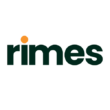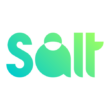Risk orchestration: addressing the misconceptions – hub platform vs true orchestration performance
Risk orchestration is an immensely powerful customer lifecycle solution – a software platform that’s proving invaluable to tech-savvy firms and organisations looking to protect their customers – and their businesses – against the rapidly evolving threat of financial crime and fraud.

There’s a genuine bottom-line benefit to be realised through effective risk orchestration of your compliance processes
But what exactly is risk orchestration? In relative terms, it’s still the new kid on the block in the risk management space, having only entered the general lexicon in the past four or five years. And with no collectively agreed definition in the market, some confusion seems to have sprouted up amongst organisations as to exactly what it means.
No more so was this brought to bear than in a recent series of in-depth research interviews conducted by Oxford Economics, on behalf of LexisNexis Risk Solutions, where a sample of C-suite executives in the risk management space were quizzed about their experiences implementing risk orchestration platforms in their organisations.
Participants were recruited on the basis they had either overseen the building of risk orchestration technology in-house or had been integral to the process of sourcing and integrating risk orchestration technology from a third-party vendor – those being the two main routes to success.
An earlier piece of analysis by LexisNexis Risk Solutions comparing the cost of building an orchestration platform in house with dedicated developer resources, versus partnering with a platform provider to deliver a plug and play solution, found that building your own solution could cost almost three times more.
It became apparent from the results of the qualitative research that significant variations exist in what people understand orchestration to be and what form of it they’ve implemented in their own organisations. The main confusion being the difference between a hub performance and a true orchestration platform.
Many organisations, it appears, had approached their orchestration goal simply by taking existing systems, processes and data sources and ‘tying’ them all together with APIs. A hub will centralise certain processes and outputs, such as sanctions screening, IDV checks and transaction monitoring, perhaps creating a user dashboard view and output scores, but provides no meaningful synchronisation of process workflows or risk score. This is not genuine orchestration.
A true risk orchestration platform synchronises workflows and data and enables customisable journeys. Waterfalling reduces friction and saves costs, ensuring appropriate checks are only applied as necessary. Genuine customers are fast-tracked, while others are routed for additional due diligence. The technology unites complex systems and processes to create a single view of customer risk, a unified risk score and automated decision making.

Chris Foye, LexisNexis Risk Solutions
The difference between the two is neatly expressed by this analogy from senior director, market planning at LexisNexis Risk Solutions, Chris Foye:
“A basic hub literally delivers whatever the third-party vendor wants you to see. Imagine a conversation with ten people, each speaking to you in a different language. How likely is it that conversation would end in a cohesive decision? This is analogous to the way that a hub delivers risk information to your business.
“All a hub does is bring multiple ‘voices’ together. A true orchestration platform gets them all speaking the same language. The best business-appropriate decisions come from meaningful conversation and clear communication.”
Little wonder then that frustration arises within organisations when a so-called orchestration platform doesn’t deliver as expected.
During the qualitative interviews for the 2023 study by LexisNexis Risk Solutions and Oxford Economics one widely experienced MRLO for a UK fintech expressed their frustrations with hub solutions that are described as orchestration platforms:
“So many of these players advertise themselves as orchestration platforms. What you find is they only orchestrate one piece of the anti-financial crime puzzle. You oftentimes have to layer another platform on top of that, to look for the fraud patterns that you want to mitigate, et cetera.
“When I join a firm, I try to look at the systems, the organisations, how they’re configured, who uses them, how the case management flow is worked through the orchestration systems, because I’ve never met anybody yet who uses just one. We have to plug and play these things together, and sometimes to get them to connect in our own way. How do you case manage something end to end, to get the right outcomes, as well as ongoing feedback and calibration across all, to reduce false positives?”
The interviewee went on to describe how this generates inefficiencies throughout the risk management process:
“You have systems that are generating alerts – the alerts need to be worked, but one transaction can give rise to several different kinds of alerts. What I found is oftentimes there are different teams, sometimes in different buildings, working on the same (or parts of the same) alerts.”
In contrast to true risk orchestration, there is a lack of harmony throughout the processes in a hub setup, so a single view of customer risk is not achieved swiftly and accurately, if at all.
This was reflected time and time again throughout our discussions, where frustrations arose from ‘orchestration platforms’ that were actually hub platforms – allied with a whole host of related factors like legacy technology, siloed processes, siloed thinking, and the decision to build a platform in house rather than buy a true risk orchestration solution.
Why is this so important?
In a nutshell, a hub doesn’t give you an integrated risk score. Instead, you get lots of different scores and indicators from the various systems and data channels being used, and your team has to put them together to arrive at your own risk score. This results in the necessity for processes that are counter-productive to the aims of a digital transformation programme – the humans are doing the heavy lifting, it’s not quick, it’s not efficient, and nor is it necessarily accurate. All of which can have significant impact on your business including customer experience and ultimately your reputation.
In true risk orchestration, all of these processes are seamlessly synchronised to deliver a single view of customer risk. Informed decision making is made simpler, smoother, more accurate and efficient. The impact of this is felt not only in customer satisfaction, which can be vastly enhanced by the speed at which individuals are authenticated and served, but in the overall effectiveness of compliance processes too, in terms of how much time and resource is spent.
To that end, there’s a genuine bottom-line benefit to be realised through effective risk orchestration of your compliance processes. The latest calculation into the cost of compliance for UK financial institutions arrived at a conservative figure of over £30 billion a year – equivalent to £194 million for the average firm (according to the LexisNexis Risk Solutions True Cost of Compliance, 2023 study). This incorporates spend on people and technology just to comply with existing regulations.
Therefore, even imagining a 5% compliance efficiency uplift gained via orchestration (assuming efficiency translates directly into cost saving) would more than justify the procurement, set-up and running costs for the first three years to acquire a platform, estimated at around £2 million. Such lofty figures really bring home the need for all firms to seek efficiency gains in their customer lifecycle – such as true orchestration affords – wherever they can be found.
Want to learn more? The essential buyer’s guide to risk orchestration contains the essential insights and advice for fintechs searching for a risk orchestration platform vendor who will help them to benefit from stronger compliance, enhanced protection, lower costs of ownership and improved customer experience. This free guide is a must-read for fintechs who want to effectively invest in risk orchestration to streamline their entire customer lifecycle and regulatory screening processes.
If you would like to explore what risk orchestration with LexisNexis can offer you and your organisation, please visit the LexisNexis Risk Solutions website.
Sponsored by LexisNexis Risk Solutions











































